
Solving and creating addition, subtraction, multiplication, and division word problems with real world context.
- Subject:
- Mathematics
- Material Type:
- Homework/Assignment
- Author:
- Melody Oquinn
- Date Added:
- 03/23/2021

Solving and creating addition, subtraction, multiplication, and division word problems with real world context.
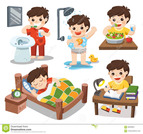
This is a presentational speaking video that students will plan and record independently to describe their daily routine

How to use this activity:Students create three small paragraphs: (1) morning routine, (2) school routine, and (3) after school or afternoon routine.

Minimize Pollution in the Environment is a lesson designed by a Health and Physical Eucation Teacher to support Health instruction. Created By: Libby Acampora Powhatan County Public Schools
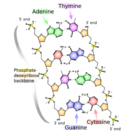
Students will participate in a 5E lesson. To ENGAGE, students will connect their understanding of the characteristics of life to the fundamental molecule of life: DNA. To EXPLORE, students will extract DNA from fruit in a hands on (or video of a) lab, and then, students will act as Watson and Crick and use clues to discover the structure of DNA. In the EXPLAIN section, students will use slides to fill out guided notes on the structure of DNA and RNA. To ELABORATE on their understanding of DNA, students can participate in the CRISPR-Cas9 interactive and the Regulation of the Lactase Gene click and learn. Formative evaluations of students's ability to model DNA include (1) using an online interactive, (2) using their bodies as a class, and (3) using a cut and paste model. Finally, the summative EVALUATE is a DNA Model FlipGrid in which students use various materials to construct and explain the structure of DNA.

I created a Jamboard with equations on each slide. Students are to model equations. The opening slide has the key for all subsequent equations. A red counter represents a negative integer, a yellow counter represents a positive integer, and a grey rectangle represents the variable. After students correctly model the equations, they may be asked to solve them. Students should use the rectangle and red/yellow counters to solve the equation. This activity was created due to students being virtual and unable to physically move the counters in the classroom. Students may work independently or collaboratively. https://jamboard.google.com/d/13T40ubvlB4-JX98Jwze4DItHJEqmCL63qEBz2ALIsxY/copy?usp=sharing
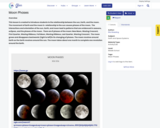
This lesson is created to introduce students to the relationship between the sun, Earth, and the moon. The movement of Earth and the moon in relationship to the sun causes phases of the moon. The interactions and orientation of the sun, Earth, and moon lead to patterns that are evidenced in seasons, eclipses, and the phases of the moon. There are 8 phases of the moon: New Moon, Waxing Crescent, First Quarter, Waxing Gibbous, Full Moon, Waning Gibbous, Last Quarter, Waning Crescent. The moon grows and disappears backwards (right to left)in its changing of phases. The moon revolves around Earth as the Earth revolves around the sun. The moon takes about one month to complete one revolution around the Earth.

Students are asked to shade in the graphics to illustrate understanding of the moon's phases, then to cut out the cards as a means to study the characteristics of each phase.

Background Information“The Moth” is a storytelling podcast that features real people telling short, engaging stories from their lives. We are going to become Identity and Conformity Detectives while listening! As we listen, we will search for ways identity and conformity have intersected in the lives of our storytellers.Essential QuestionAs you listen, consider this question: How does society shape our identities? Learning TargetsI can learn about conformity and reflect on the ways it impacts my life and identity.I can utilize audio media as a source to inspire ideas and analysis in my writing.

Students demonstrate comprehension in the form of a Movie Poster.
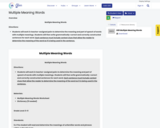
Multiple Meaning WordsDirections: Students will work in teacher-assigned pairs to determine the meaning and part of speech of words with multiple meanings. Students will then write grammatically-correct and correctly constructed sentences for each word. Each sentence must include context clues that allow the reader to determine the meaning of the word as it is being used in the sentence.

This lesson rpovides notes, practice, activies ans sessments for teaching mutliplying fractions.
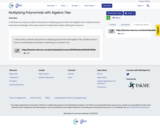
In this Desmos activity, students will practice multiplying polynomials with Algebra Tiles. Students should have prior knowledge of the area model of multiplication before utilizing this resource.
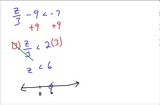
This resource provides a lesson of editable items on solving Multi-step inequalities, including with practical problems, which covers SOL 8/18. The resources can be used for a Math 8 course, an accelerated math course that incorporates Math 8 standards, or as review in preparation for higher-level content.
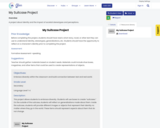
A project about identity and the impact of societal stereotypes and perceptions.

The purpose of this lesson is to help students understand the U.S. foreign policy toward the Soviet Union during the Cold War. The lesson includes an introduction, primary source document and analysis sheet, and a Google Worksheet. Students will use social science skills to analyze a primary source and they will research the web and web articles to answer questions on various Cold War policies.

Title: Narrative Elements LessonTopic: Narrative ElementsEducational Standards: SOL 9.4Subject Area: English 9
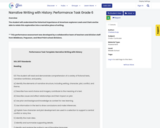
The student will understand the historical importance of American explorers Lewis and Clark and be able to relate this exploration into a narrative piece of writing. ** This performance assessment was developed by a collaborative team of teachers and division staff from Middlesex, Poquoson, and West Point school divisions.

This activity is to be used after they have been taught native American resources. Students will need to fill in a Google Drawings chart for the Native American Resources by dragging each photo into the rectangle that it belongs to. When they are done, they will fill out the chart asking for them to justify their descions. They will need to describe what the photo is and why they put the photos in each rectangle. After they have explained, they will need to write the name of the tribe the resource belonged to (Inuit, Lakota, Iroquois, Pueblo, or Kwakiutl).
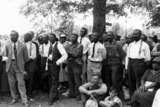
This inquiry focuses on the uneven impacts of the New Deal policies with a focus on the experiences of everyday Americans living in the South. It is intended to expand students’ existing understanding of the New Deal by engaging in analysis around issues of equity and perspective. The questions, tasks, and sources in this inquiry asks students to consider the impact of three areas of federal policy during the New Deal (agricultural, employment benefits, and housing) and to consider how those policies may have been interpreted by Southerners at the time.